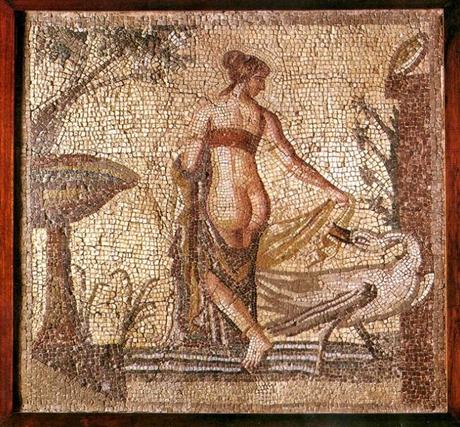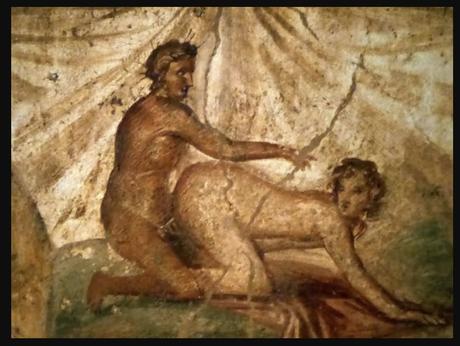A group of archaeologists work in the Pompeii archaeological park in southern Italy. There was a spectacular erotic fresco in very good condition. It is the Greek myth of seduction, embodied in Leda and the swan. It is a unique and exceptional find, said the director of the archaeological park, Massimo Osanna, when announcing the discovery.
According to Greek mythology, Leda was the wife of Tindareo of Sparta. While she was walking along the banks of the Eurotas river she was seduced or raped (according to the versions that have come down to us) by a swan, who turned out to be the incarnation of Zeus.
That same night, the woman also had sexual relations with King Tíndaro. Leda later laid two eggs, from which four children were born: the twins Castor and Pollux, Helena (the future wife of Menelaus, king of Sparta) and Clitenmestra. But only Helena and Pollux were considered children of Zeus and, therefore, immortal.
The fresco is a scene of great sensuality and full of color, decorating a small bedroom in a residence or domus. It is about a wealthy Roman family on Carrer del Vesuvio, near the city center. It was found while remodeling of the excavation fronts was underway, according to the park director.

Leonardo Da Vinci, Michelangelo, Boucher, Gerome and Tintoretto are some of the Renaissance artists who painted works for this erotic myth. Da Vinci's and Michelangelo's Ledas were lost but there are copies of them on display. The story also inspired a piece by the Irish poet William Butler Yeats.

The theme, which very explicitly represents the sexual encounter between Leda and Zeus, was frequently used as decoration in the Roman Empire. In the images shown by the archaeologist, Leda is seen sitting half naked and in a gold and transparent garment receiving her guest with a sensual gaze. A look that seems to be directed towards those who once passed through the door to enter the room of this house in Pompeii.

Leda's portrait is extremely particular and different from those found so far in other houses. This myth has never been encountered with this sensual iconography. Leda looks at the viewer with absolutely pronounced sensuality. It is the same house where another Priapus fresco was found last August. Priapo is a mythological deity represented by a small man with a huge phallus. It is in the entrance hall of the house, whose owner has not been determined.
According to Osanna, the entire luxurious home was filled with high-impact decorative elements. It can be inferred that its owner was probably a wealthy merchant, possibly a former slave. And he was also eager to elevate his social status through references to high-level cultural myths. "
Archaeologists and restorers who clean and restore the fresco have pointed out that it is of a very high quality. Its intense colors have been beautifully preserved despite almost 2,000 years. I also endure the eruption of Vesuvius that buried Pompeii in ashes. At this time, it was not decided whether the fresco would be sent to a museum to protect it and expose it to the public without risk.

Pompeii continues to offer surprises. Archaeological treasures continue to be found that describe the daily life, customs, decorations, passions and sexuality of the Romans. It is almost like a photograph taken just after the eruption of Vesuvius in AD 79. Archaeologists continue to explore and discover residences with frescoes, sculptures, amphoras, coins, and inscriptions. Mr Osanna shares them on the social networks of the archaeological site.

